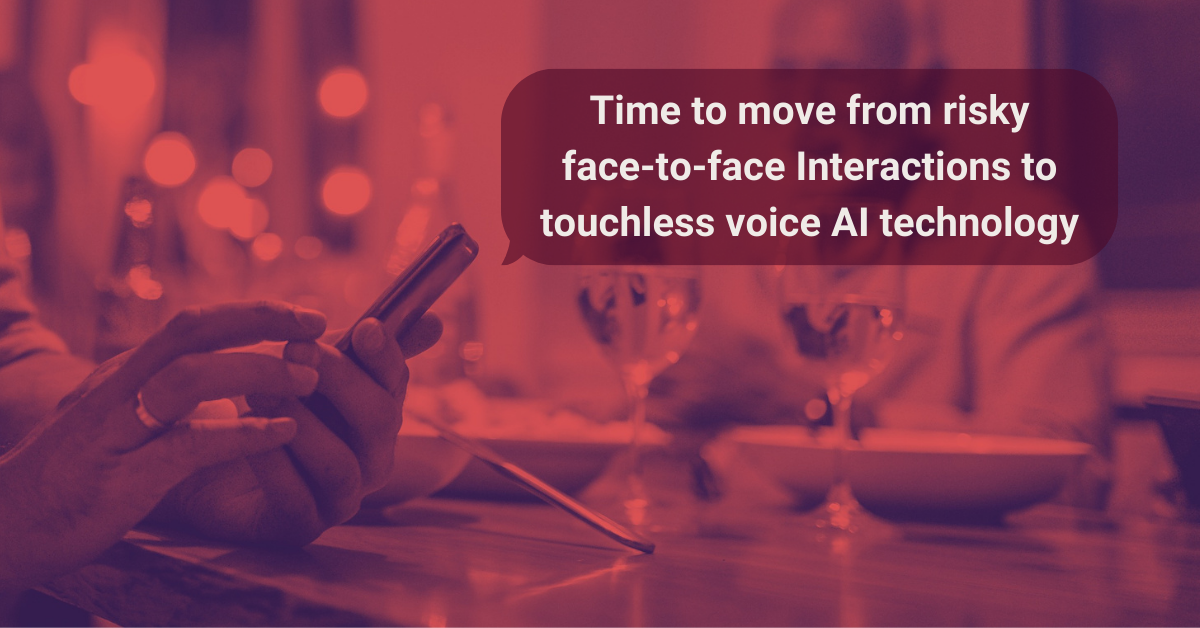

For most of us, “Hey, Siri, type a message” or “Alexa, play me a song” have come to be everyday phrases as smart speakers and voice assistants have gained popularity. Voice tech and artificial intelligence experts have predicted that consumers will want to issue similar commands in physical spaces if that helps in reducing the spread of the virus.
Darin Clark, director of business development for the audio tech company Sound Hound Inc., has said that “We’ve seen a significant upsurge in companies interested at trying to reduce contact.” Consumers can now use different development platforms to add voice user interfaces to technology. This technology can be used in cars to ovens. This helps companies create user experiences that allow the consumers to place orders, shop, or pay without touching screens or interacting with employees directly.
Voice technology can also be used to recommend brands to shoppers and consumers, give directions around stores, execute checkouts, place orders, create shopping lists, and more, which potentially reduces the requirement for human interaction in stores as the pandemic has kept safety concerns on top of the minds of the consumers.
Businesses have recently been primarily interested in letting people use voice technology to search their brand catalogs to check for in-store products. Meanwhile, restaurants and hospitality need to rethink integrating voice technology into their in-store, store-front, and drive-through experiences, allowing consumers to place an order without touching any buttons.
Tinglong Dai, an associate professor of operations management and business analytics at the Johns Hopkins Carey Business School, said that “People are very familiar with voice tech in a consumer setting, but the application for businesses remains limited.” According to him, the most potential obstacle to upscale the usage of voice technology still stands to be the discomfort consumers might face while making the shift. Many consumers prefer human assistance over voice tech assistance in specific spaces, making it a task to increase Voice Tech and AI usage in our day-to-day lives.
People are often found to be most comfortable using voice tech in grocery stores and fast-food restaurants. A lot of people have been seen getting cozy with conversational AI at restaurants and grocery stores.
The younger generations have adapted to intelligent speakers and conversational AI, but the older peers are yet to get comfortable with it, and soon it will be a natural companion for young and old. The Voice tech companies have been looking to delve deeper into more personalized voice assistants to give consumers a sense of belonging. The pandemic has exposed many of us to alienation, and the need for a customized assistant and personalized experience is at an all-time high. Amealio is bridging the gap between consumers and Voice AI for F&B and Hospitality and transforming it into a hyper-personalized experience marketplace, making ordering in, making a request, seating, dining, and ordering to payment out more feasible and seamlessly accessible.
Now that F&B and Hospitality in the US and many other places are coming back up in a V-shaped recovery model, they are looking to move forward quickly amidst the pandemic and create tremendous value for their brands and newer customer engagement models. The bottom line remains that the move to voice AI and blend of technology is inevitable and the only way forward from here on.
USA: One Sansome St Suite 3500, San Francisco, CA 94104
Canada: 4979 Willingdon Ave, Burnby, VG5 3H8
India: Amanora Chambers, Amanora Park Town, Pune 411028
India: T-Hub, IIIT Campus Hyderabad, Telangana 500032